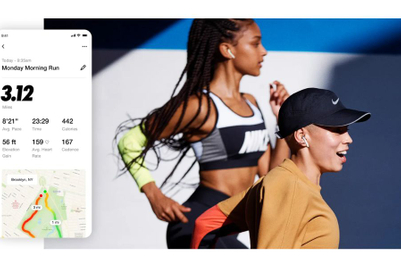
As anyone who has had carpet burn or a shocking call-centre experience will tell you, friction is a bad thing. In the world of customer experience, friction is the enemy. Smart brands focus on creating frictionless and seamless experiences at all costs. Just look at how much Amazon has invested in making its platform (and its logistics operation) the epitome of ease and convenience. Friction puts consumers off, kills sales and is bad for the brand, right?
Well, not necessarily.
Of course, people don’t want to navigate obstacles when they are buying something, searching for information or making an order. We’ve all got busy lives and often just want brands and businesses to get out of the way. But done in the right way at the right time, friction can be a good thing. You need friction to make fire, after all.
Let’s explore the positive side of friction.
Friction can make or break a product launch. A great example of this is the story behind the iconic cake-mix brand Betty Crocker. The brand almost failed to take off because customers felt the process of making a cake with Betty Crocker was way too easy. Because people felt that they were cheating. So, cleverly, the brand added in some extra steps to its cake-making process to give people a more satisfying experience.
Friction can make a sales experience more effective. A few years back, Digitas worked with Virgin Atlantic to redesign its website’s user experience for people buying luxury holidays. In testing, we found that customers who searched on the site for holidays to suit them were served recommendations so quickly that they didn’t trust that the recommendations were considered enough or tailored to them.
So we slowed the page down, added in a "spinner" graphic and some brand copy. In other words, we broke all the rules of frictionless, reductive best practice. By using counterintuitive, creative thinking, not only did the online conversion rate increase, so did brand favourability.
Friction can be helpful to people. Netflix—which is perhaps the exemplar of frictionless customer experience—also recognises the benefit of friction. For example, it shows a confirmation box to users before signing them out of all devices. Signing back in to all of your devices is annoying, so Netflix adds in a step to the process to make sure you don't log out unintentionally.
And friction can bring a sense of ownership. Ikea’s business model means that you get cheap furniture, but it’s self-assembled. The act of having to assemble your own furniture actually increases its perceived value. It’s called the Ikea effect.
Friction can be used as a distraction. The reason you get mirrors in lifts dates back to the mid-20th century, when buildings were getting taller but lifts weren’t getting any faster. The solution was to distract people during the journey between floors by installing a mirror. Few of us can resist a little self-admiration when the opportunity arises and people were distracted from thinking about how long the lift was taking. Perceived journey times dropped and the experience improved significantly, simply because of the distraction.
Moreover, friction can be used as an opportunity to make experiences memorable. A lot of modern digital platforms use UX best practice but at the expense of brand practice. All completely logical, but not differentiated, memorable or fun.
Brands have had fun with their 404 error pages. Lego’s error page is entertaining, simple and bang on brand, as is Pixar’s, which depicts the character Sadness from Inside Out feeling the user’s pain. Brands inject fun and memorability into 404 pages, so why not other areas of the digital experience?
So how do brands know when and how to build friction into the customer experience? Like anything, it requires a deep understanding of your audience. You need to carefully map out the customer journey to find and test the interactions where frictionless works well and where friction can help. It also necessitates getting marketing teams and UX teams to work much more closely together, presenting a major challenge to the traditional corporate structure.
Friction is a nuance. Used sparingly and wisely, it helps brands deliver fun and differentiated experiences. At Digitas, we feel that memorability is the next frontier of customer experience. And friction is a key ingredient.
Matt Holt is chief strategy officer at Digitas in the UK.



.jpg&h=334&w=500&q=100&v=20250320&c=1)


.png&h=334&w=500&q=100&v=20250320&c=1)





.png&h=334&w=500&q=100&v=20250320&c=1)







